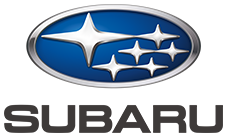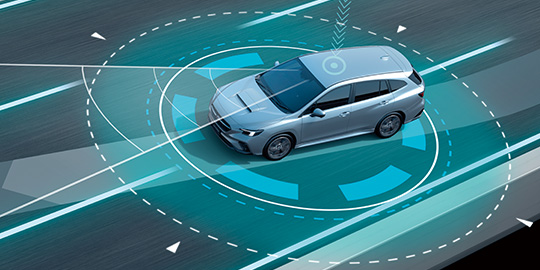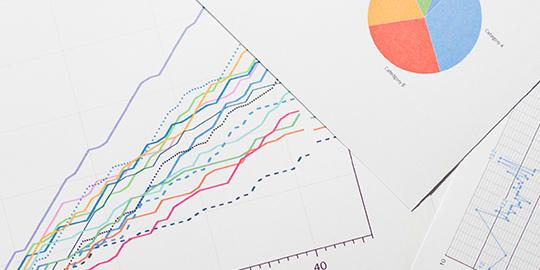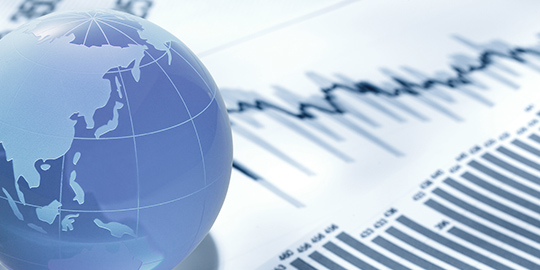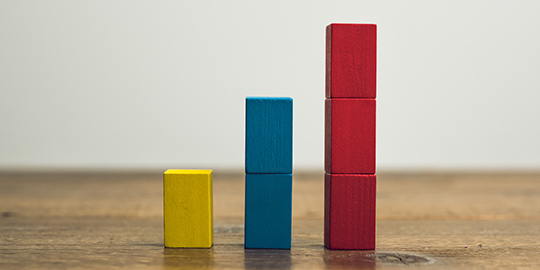Path to Further Growth
Prospects for future business.
Overview of Mid-Term Management Vision “STEP”
Creating the Mid-Term Management Vision
In July of 2018, we formulated our mid-term management vision “STEP,” with the goal of building trust and resonating with customers by providing “Enjoyment and Peace of Mind.”

“STEP” is an acronym formed from the initial letters of Speed, Trust, Engagement, and Peace of Mind and Enjoyment, which are four important elements of the vision. The letter “T” is emphasized in the logo as Subaru considers trust to be the most important element of all. The name also expresses the Company's determination to take “steady, strong steps” before a future jump over social changes.

Concept and Timeline

Vision for 2025

To realize the vision, we have been taking various initiatives primarily centered on “Corporate culture reform,” “Quality enhancement,” and the “Evolution of the Subaru difference.” And we have been steadily making progress in these key initiatives.
For “Corporate culture reform,” we promoted activities focused on growth and development of individual employees and have moved on to a phase for strengthening engagement so that each employee can feel their growth and job satisfaction. For “Quality enhancement,” we consider high quality as the bedrock of the Subaru brand and the source of additional values. We are currently at a stage to deliver results of our quality enhancement including the responses to new technology and are driving forward such activities. For “Evolution of the Subaru difference,” we further evolved technology that supports “Enjoyment and Peace of Mind” towards achievement of zero fatal traffic accident* and contribution to a carbon-free society announced at the technology briefing in January 2020. We will continue to strengthen “Subaru difference” also in the age of electrification through utilization of all-wheel drive (AWD) control knowhow, our strength, in motor control and through other means.
* Fatal traffic accidents of Subaru drivers/passengers and pedestrians/cyclists Subaru cars collide with.
Market Strategy
We aim to maintain and expand our market share in each market by increasing the value we provide to our customers and enhancing the strength of our brand. In our priority market of the U.S., we are making progress toward a 5% market share.
Market share for SUBARU vehicles in the U.S.

Profit Direction and Capital Policy
- We aim for an industry-leading operating margin (8%).
- Capital expenditures and R&D expenditures will be steadily executed for initiatives aimed at enhancing the SUBARU difference.
- Capital expenditures: In addition to recurring investment (3.5% to 4.0% of revenue), full-scale investment in reorganizing the domestic production system will begin in FYE March 2024 (250 billion yen over five years)
- R&D expenditures: 120 billion yen level/year
- We aim for a ROE of at least 10% while ensuring a capital equity ratio of 50%.
- Our stance on shareholder returns remains unchanged.
- Positioning dividends as the main form of return to shareholders with emphasis on stable, continuous returns. Based on the performance-linked approach, dividend payments will be determined considering the business performance of each fiscal year, investment plans, and the business environment. (Consolidated payout ratio: 30%–50%)
- Conducting share repurchases flexibly in line with our cash flow.
| Capital Policy | ||
|---|---|---|
| ROE | At least 10% (target) | |
| Capital equity ratio | 50% (minimum) | |
| Shareholder returns | Consolidated payout ratio | 30–50% |
| Share repurchases | Conduct flexibly | |
Toward the Realization of a Carbon-free Society
As the electrification of automobiles continues, Subaru will contribute to this carbon-free society by demonstrating the Subaru Difference through distinctiveness and technological innovation. Specifically, our plan is to make at least 40% of Subaru global sales be battery electric vehicles (BEVs) and hybrid electric vehicles (HEVs) by 2030. In addition, by the early 2030s, we aim to apply electric powertrain technology to all Subaru vehicles sold worldwide, and by 2050, we aim to reduce well-to-wheel*1 CO2 emissions by 90% or more*2 compared to 2010 levels.

- *
- Battery electric vehicle
- *1
- Well-to-Wheel: Approach to calculating CO2 emissions including the emissions produced by the generation of electricity to be used by EVs and other vehicles.
- *2
- Reduce total CO2 emissions calculated based on the fuel efficiency (notified value) of all Subaru automobiles sold across the world by 90% or more relative to the 2010 levels in 2050. Changes in the sales quantity due to changes in the market environment shall be taken into consideration, while minor changes in running distance shall not.
- *3
- Refers to the technology used to foster the use of electricity for HEVs, HVs, and others.
- *4
- Excluding models supplied by OEMs.
New Model BEV—SOLTERRA
The SOLTERRA is SUBARU's first global BEV that is packed with “Enjoyment and Peace of Mind”, carefully cultivated by our company over many years. Customers can choose this environmentally friendly and practical model with the same peace of mind as previous SUBARU vehicles.
This development project was carried out jointly with Toyota Motor Corporation (hereinafter, “Toyota”). During the process of creating a truly outstanding vehicle, both companies knew the SOLTERRA would serve as the foundation for future SUBARU BEV models, and made a firm commitment to create a BEV that would feel like any other SUBARU model to customers. Under the motto, “Let's fight nice and friendly,” both companies engaged on an equal footing. Rather than compromise, we held repeated discussions with Toyota's team, which, as a result, enabled us to fully realize SUBARU's unique approach to car manufacturing.
Reorganization Plan for Our Domestic Production System
Although it is difficult to precisely predict the timing of the large-scale transition to BEVs that is expected to arrive in the future, we are planning a strategic reorganization of our domestic production system to ensure that we can respond to this change. We are considering starting in-house production of BEVs (around 2025 is our target) and adding a specialized BEV production line after 2027 to increase the number of models and units. Additionally, we are steadily working to use the next-generation e-BOXER system, which uses the TOYOTA Hybrid System (THS), on our horizontally-opposed engine, in several models.
During the transition period to BEVs, we will establish a flexible system that can also produce gasoline and hybrid vehicles to achieve even more highly efficient BEV production, with the aim of improving our business performance. We will continue to provide products which satisfy our customers while carefully monitoring trends related to the market and environmental regulations, as well as the convenience of BEVs, including infrastructure.
Strategic reorganization of domestic production for the expansion and acceleration of electrified vehicle development

Overview of Domestic Production Reorganization PlanPDF/636kB
For More Information
- New Mid-Term Management Vision “STEP”PDF/2.4MB (announced on July 10, 2018)
- New Mid-Term Management Vision “STEP” [Video] (held on July 10, 2018)
- Progress of the Mid-Term Management Vision “STEP” Presentation MaterialsPDF/3.9MB (announced on May 11, 2021)
- Progress of the Mid-Term Management Vision “STEP” Presentation Materials (with transcripts)PDF/1.3MB (announced on May 11, 2021)
